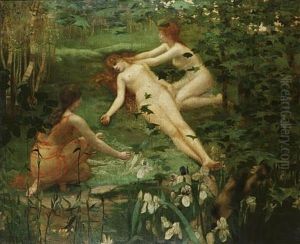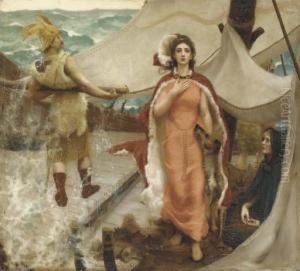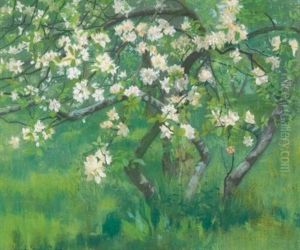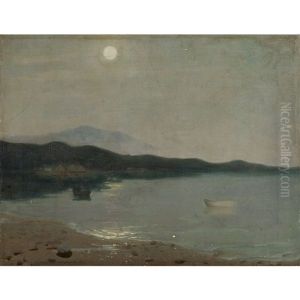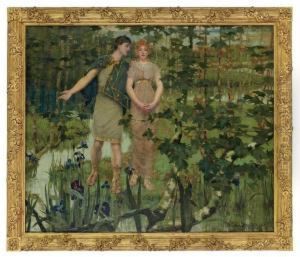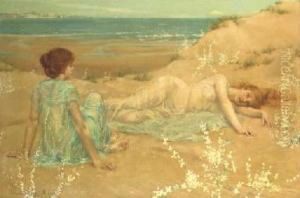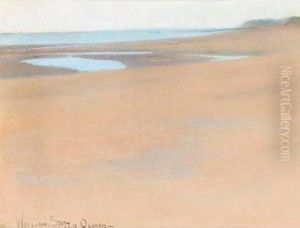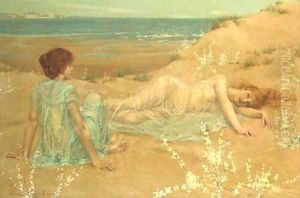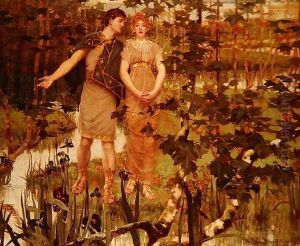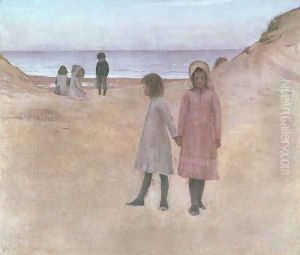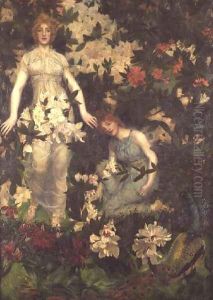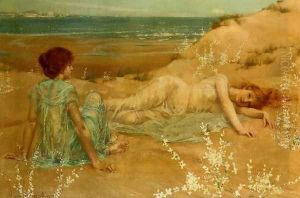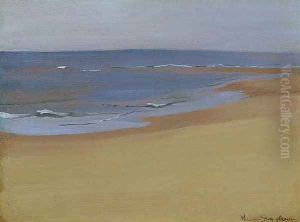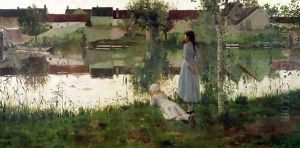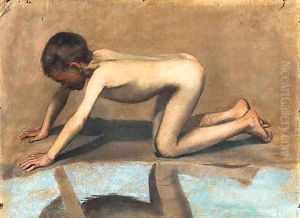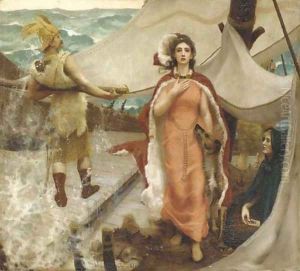William Stott Of Oldham Paintings
William Stott, known as William Stott of Oldham to distinguish him from others with a similar name, was an influential British artist born on November 20, 1857, in Oldham, Lancashire, England. He was a notable figure in the progression of naturalistic painting in Britain towards Impressionism and played a significant role in the British art scene at the end of the 19th century.
Stott trained at the Manchester School of Art from 1871 to 1878 and later at the prestigious École des Beaux-Arts in Paris under the tutelage of Jean-Léon Gérôme. During his time in Paris, Stott was significantly influenced by the works of the French Impressionists and the Barbizon School, which emphasized painting en plein air (outdoors) and focused on capturing the transient effects of light. He soon adopted a more fluid, luminous painting style, which contrasted with the more academic and rigid techniques he had previously learned.
In 1881, Stott exhibited his work 'Le Passeur' (The Ferryman) at the Royal Academy in London, which was met with critical acclaim. This painting, which depicted a pastoral riverside scene, exemplified his shift towards naturalism and was pivotal in his career. His work during this period often featured landscapes and rural life, imbued with a sense of tranquility and a delicate interplay of light and atmosphere.
William Stott of Oldham was not just a painter but also an art educator. He believed in the importance of sharing his knowledge and the influence of French art with the next generation of British artists. He played a part in the New English Art Club, which aimed to provide alternative exhibition spaces to the Royal Academy, promoting a more progressive and liberal approach to art.
Despite his success, Stott's life was relatively short. He died on February 25, 1900, at the age of 42. His legacy, however, lived on through his contributions to British Impressionism and his influence on contemporary British artists. After his death, his work continued to be exhibited and appreciated, and today, William Stott of Oldham is remembered as a critical figure in the transition of British art towards a more modern and impressionistic style.
